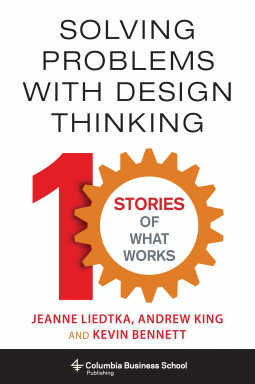
Continue to try in the face of failure
Whatever label it goes by, [design thinking] is an approach to problem solving that is distinguished by a few key attributes:
– It emphasises the importance of discovery in advance of solution generation using market research approaches that are empathetic and user driven
– It expands the boundaries of both our problem definitions and our solutions
– It is enthusiastic about engaging partners in co-creation
– It is committed to conducting real-world experiments rather than just running analyses using historical data
I like to say that design thinking is a framework and mindset driven by getting to the root why, ideating without censorship, empathy, and testing your ideas/assumptions. Whether you use the “What is? What if? What wows? What works?” framework, or the “Empathise, define, ideate, prototype, test” framework, the same energy and creative confidence remains.
Jeanne has wisdom for those looking to implement design thinking across the company:
Deploying design throughout an organisation involves more than providing a process and some tools. it involves helping individuals make a new set of choices: to seek deep insights and be user driven, to keep looking for great solutions even after hitting upon a good one, to risk not getting it right the first time, to continue to try in the face of failure.
Many of the mindsets and actions you’d encourage to innovate as a company runs contrary to the kinds of incentives and teaching that managers have already had. There’s a mold already in place that we would acknowledge and reshape.
When details are in place, it pains us to change it. Sunk costs. We’re resistant to doing more work when it feels like the previous work was a waste — and so we stay with processes that don’t serve their purpose.
Among other things, design thinking tries to counter our instinct to solve a problem as soon as we hear about it, and to jump to logistics before we’ve considered the root cause. So, sketch in sharpie rather than pen:
Rough prototypes, they knew, invited a kind of engagement that more polished ones did not.
Work with tools and people and process that will give you a little bit more space to look at the bigger picture. There’s no point in polishing something only to find out it’s not what you were looking for.
—–
Design thinking challenges the defaults. It challenges what we do with our customers, but also internally with each other. Who are we to forget that we are building a culture and company for each other?
The more you can create comfort, the more people behave as if they are comfortable. So the right meeting environment for learning might be the exact opposite of the typical conference room, where the walls are closed off, the temperature varies, and there is one glass of water on the table that everybody is eyeballing.
Design thinking allows us to try new mediums, ones that might get what we want to express far more than a giant, word-filled Powerpoint deck. We use metaphors and colors to distance ourselves from what we’re trying to solve, and thus see it from new perspectives with ease. We use data and make meaning with it.
They were also asked to create a collage that symbolises their perception of well-being and their five-year projections for themselves. “People used a lot of images in these collages,” Bill recalled. “That was a wonderful launching pad for them to tell the story of their own physical well-being and how activity could play a role in that: things like being able to get back to horseback riding or playing golf. So their activity wasn’t just about the number of times they made it to the gym this month; it was about being more physically fit in order to be able to pursue other lifestyle interests or keep up with grandchildren or what have you.